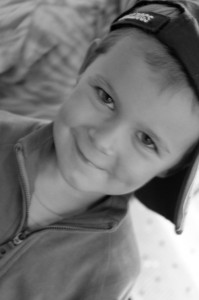We are continuing this series with two more of the most common challenges of transitioning from infancy to toddlerhood as your baby grows. Here is what parents had to say …
 What do you find most challenging about transitioning from using AP in infancy to using AP in toddlerhood?
What do you find most challenging about transitioning from using AP in infancy to using AP in toddlerhood?
Challenge: Understanding Aggression
- My toddler feels the need to act out physically despite the fact that this isn’t being modeled by anyone in his life.
- Toddlers kick, punch and bite and yet don’t know their own strength.
- It’s hard to be kind and patient and empathetic while your kid is kicking your [butt]!
Tip: Focus on the feelings behind the behavior.
Aggression in toddlers is very normal and is a phase most children go through as they develop necessary connections for communication in their brains. As they enter the age of autonomy around age 1-2, children become capable of feeling strong emotions but are still lacking in self-regulation and language skills. In short, the neural connections between the midbrain (where emotions originate) and the prefrontal cortex (where logic and reasoning originate) are simply not there. Help them develop by doing three things:
- Accept the emotions behind the behavior (the kicking is not OK, but the anger is).
- Give your child the words to identify his feelings (“You are mad. It’s OK to be mad.”)
- Create a safe space for an immature toddler to have his feelings while making sure no one gets hurt.
Challenge: Not Taking Emotions Personally
- Dealing with those big, turbulent emotions without getting caught up in them. Keeping my cool and modeling patience and being a soothing presence takes a LOT of work on my own triggers and stress.
- I found it hard to accept her negative emotions without feeling upset myself … I was so used to always having a happy baby that I guess I wasn’t prepared for her big feelings.
- Separating my toddler’s emotions from my own
Tip: Pause
To avoid the emotional exhaustion that follows in the wake of a toddler meltdown, pause to remember three things:
- They’re my child’s feelings, not mine. She is not wrong for feeling this way, and I do not need to try to fix her feelings for her.
- I am not the cause of my child’s feelings. I will take care of my child by meeting her needs on a regular basis–this means setting limits, ensuring safety, and nourishing her physically and emotionally. She is capable of handling her feelings.
- It’s not personal. My child’s feelings are not a personal slight against me. I am not a bad mom if my child is upset.
That said, there are ways to maintain a connected relationship while keeping yourself from becoming caught up a toddler’s in-the-moment feelings. Here’s how:
Pause (Yes, again. Pausing before you react is always awesome). Take a breath. Give your child time and space with her own feelings and you with your own feelings. This may mean you leave the room for a short time-out of your own.
Check in. Stay with her and periodically ask how she is doing. This is not the time to talk about the situation; just let her know you understand how she feels. “I know you’re mad, and that’s OK. Let me know when you’re ready for a hug.” Trust in her ability to handle her feelings.
Follow-up. Always come back together and do something fun. You can touch base on the previous situation or not. But do something with your child that she enjoys and that will foster some connective energy between the two of you. Make cookies, play games, go for a walk, dig in the garden, ride bikes, read, go to the park, blow bubbles … pretty much anything you do together will communicate to your child that you love and accept her despite her anger at you, and that you’re not holding her feelings against her.
Don’t miss Part 1, Part 2, and Part 3 of this series, and watch for the final installment, Part 5, coming soon!
